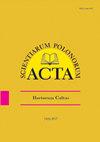Determination of the effects of PGPR isolates and algae on plant growth in broad bean (Vicia faba L.) grown under water stress conditions
IF 0.7
4区 农林科学
Q4 HORTICULTURE
引用次数: 0
Abstract
In regions exposed to drought stress, the use of bacteria applications to promote yield and quality has increased. This study was carried out to determine the effects of rhizobacteria and algae treatments on some biochemical and physiological properties of broad bean (Vicia faba L.) grown under water stress conditions. According to the completely randomized experimental design, the study was carried out in 4 replications in factorial order. In the experiment, the Filiz-99 broad bean variety was used as a plant material. In the study, 4 different biological applications (control, blue-green algae, and 2 different bacteria) and 3 different irrigation levels – 100% (NI), 50% (RI1), and 25% (RI2) – have been applied. In the study, properties such as root and stem length, stem and root fresh weight, stem, and root dry weight, nitrogen balance index, antioxidant, flavonoid, and phenolic properties were examined. Root length changed between 21.37–25.62 cm in bacteria and algae applications, and the highest value was obtained from the B1 application with 25.62 g. At increasing water stress levels, the nitrogen balance index varied in the range of 128.01–77.50%. In bacteria and algae applications, the highest value was obtained from the B1 application. While the phenolic content ranged between 127.53 and 134.31 mg GAE (Gallic Acid Equivalents) g–1 with increasing water stress, the highest value among biological applications was B1 application with 138.06 mg GAE g–1. As a result of the interaction of factors, the highest phenolic values were obtained from B1 × RI2 (149.85 mg GAE g–1), B2 × RI2 (137.05 mg GAE g–1), B0 × NI (127.43 mg GAE g–1), and B0 × RI2 (123.69 mg GAE g–1) applications, while the lowest values were obtained from B2 × NI (123.22 mg GAE g–1), Alg × RI2 (126.65 mg GAE g–1), Alg × NI (127.75 mg GAE g–1), and B1 × NI (131.73 mg GAE g–1) applications. In the study, it was determined that bacterial applications were more effective than algae applications.在水分胁迫条件下测定PGPR分离物和藻类对蚕豆(Vicia faba L.)植物生长的影响
在面临干旱胁迫的地区,使用细菌来提高产量和质量的情况有所增加。本研究旨在测定根际细菌和藻类处理对水分胁迫条件下蚕豆(Vicia faba L.)某些生化和生理特性的影响。根据完全随机的实验设计,本研究按析因顺序进行了4次重复。在实验中,使用Filiz-99蚕豆品种作为植物材料。在这项研究中,应用了4种不同的生物应用(对照、蓝藻和2种不同的细菌)和3种不同的灌溉水平——100%(NI)、50%(RI1)和25%(RI2)。在本研究中,检测了根和茎长、茎和根鲜重、茎和根干重、氮平衡指数、抗氧化剂、类黄酮和酚类等特性。在细菌和藻类应用中,根长在21.37–25.62 cm之间变化,B1应用获得的最高值为25.62 g。随着水分胁迫水平的增加,氮平衡指数在128.01–77.50%之间变化。在细菌和藻应用中,B1应用得到的最高值。随着水分胁迫的增加,酚类含量在127.53至134.31 mg GAE(没食子酸当量)g–1之间,但在生物应用中,最高值为B1应用,为138.06 mg GAE g–1。由于因素的相互作用,B1×RI2(149.85 mg GAE g–1)、B2×RI2,和B1×NI(131.73 mg GAE g–1)应用。在这项研究中,确定了细菌应用比藻类应用更有效。
本文章由计算机程序翻译,如有差异,请以英文原文为准。
求助全文
约1分钟内获得全文
求助全文
来源期刊
CiteScore
1.30
自引率
14.30%
发文量
61
审稿时长
4-8 weeks
期刊介绍:
In Acta Scientiarum Polonorum Hortorum Cultus we publish original research papers and review articles containing new and significant information on broad aspects of horticulture and related disciplines. The papers are published in English only, in six issues yearly.

 求助内容:
求助内容: 应助结果提醒方式:
应助结果提醒方式:


